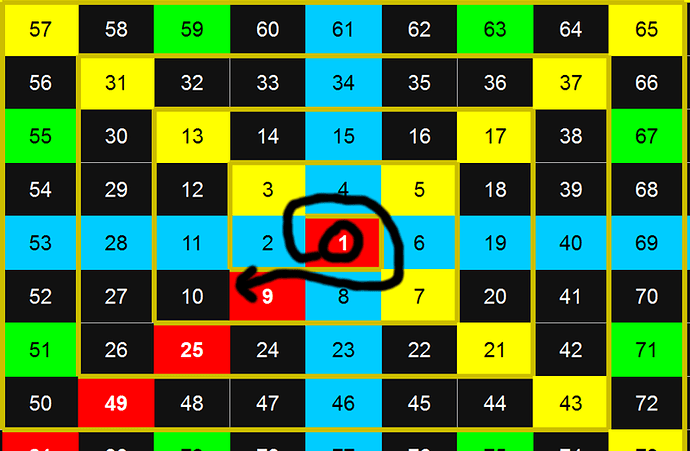Hi and hello to all, God’s beings!
In Calc, I would like to “draw” a spiral from ‘squares’ (cells), and populate them with numbers;
Populate:
- from a starting number (x), by step (y), until final number of cells (z) is reached; e.x. - start with number 1 (x=1), increase each step by number 5 (y=5), continue until 100 cells are populated (z=100)
Draw - starting from a ‘center’ cell, draw rectangle (= cell border), and continue drawing in spiral, on left (or right side), then go up (or down), and right, then down etc.
I want to insert an image, but this web page is blackmailing me, saying (with pirate accent, drunken, of course): “Hoy, ya, gimme 3 beers, if ya want to take a picture of me, or I’ll punch you in ya face!” Rude web page, must admit. One of the rudest I have seen in last 30 years. No, definitely the rudest web page of all times.
Please, dear God Almighty, I just want to insert an image of what I am trying to program with Calc, I am not here to fight. And please forgive those authors of this blackmail. Please, dear God. I love you so much.
Simon
S love nia

